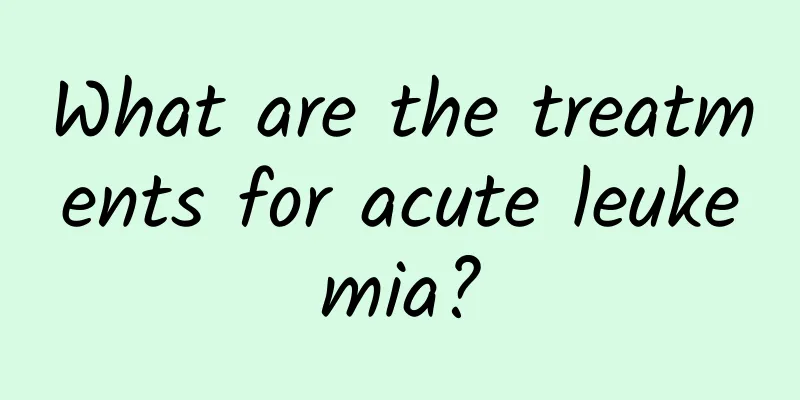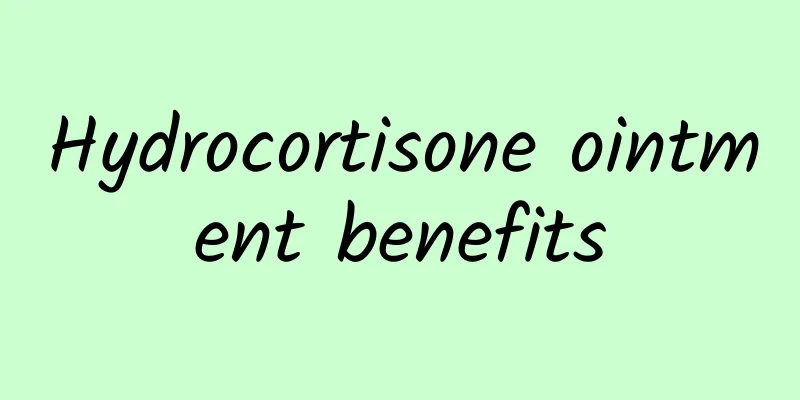What are the treatments for acute leukemia?

|
The treatment of acute leukemia, including supportive treatment, mainly refers to the patient paying attention to rest, eating more high-calorie, high-protein foods, and preventing infection. In addition, chemotherapy is also required because it is an important means of treating acute leukemia. 1. Supportive treatment (1) Rest in bed: If you have a high fever, severe anemia, or obvious bleeding, you should rest in bed. Eat high-calorie, high-protein foods to maintain water and electrolyte balance. (2) Prevention and treatment of infection Severe infection is the main cause of death, so prevention and treatment of infection is very important. “Sterile” rooms or areas should be set up in patient areas to isolate people with low neutrophil counts or those undergoing chemotherapy. Pay attention to the hygiene of the skin in the mouth, nasopharynx, and around the anus to prevent mucosal ulcers, erosions, and bleeding. If they occur, provide timely symptomatic treatment. Food and tableware should be sterilized first. Oral non-absorbable antibiotics such as gentamicin, colistin and antifungals such as nystatin, vancomycin, etc. are taken to kill or reduce bacteria and fungi in the intestines. For patients with existing infection, bacterial culture and drug sensitivity test should be performed before treatment in order to select effective antibiotics for treatment. (3) Correction of anemia: Patients with significant anemia may receive red blood cell transfusion or fresh whole blood as appropriate; patients with autoimmune anemia may receive adrenal cortex hormone, testosterone propionate or protein anabolic steroids, etc. 2. Chemotherapy Chemotherapy is the main treatment for acute leukemia. Chemotherapy can be divided into two stages: induction remission treatment and post-remission treatment, during which intensive treatment, consolidation treatment and central nervous system prevention treatment can be added. Remission induction is an intensive chemotherapy that uses a combination of large doses of multiple drugs in order to quickly kill a large number of leukemia cells, control the disease, achieve complete remission, and lay a good foundation for future treatment. The so-called complete remission means that the symptoms and signs of leukemia completely disappear, and the blood and bone marrow pictures basically return to normal. The purpose of post-remission treatment is to consolidate treatment and maintain intensive treatment, and ultimately achieve cure of the disease. Consolidation therapy is carried out after the patient achieves remission through induction remission treatment. In principle, the original induction chemotherapy regimen is continued for 1 to 2 courses. Maintenance consolidation therapy is performed after the patient has achieved complete remission through induction remission therapy and consolidation therapy, in order to continue to kill the remaining leukemia cells in the body to the maximum extent possible. Central nervous system preventive treatment should be carried out immediately after remission occurs in induction therapy to avoid and reduce the occurrence of central nervous system leukemia. A complete treatment plan should follow the above principles. 3. Bone marrow transplant (1) The donor of a syngeneic bone marrow transplant is an identical twin. (2) The donor of allogeneic bone marrow transplantation is the patient's sibling or an unrelated donor. (3) Autologous bone marrow transplantation does not require donor selection and is easy to promote. (4) Peripheral blood hematopoietic stem cell and umbilical cord blood transplantation can have two donor sources: autologous and allogeneic. |
<<: What are the symptoms of norovirus infection?
>>: How is Norovirus transmitted?
Recommend
Chinese herbal ginseng price
The practical value of wild ginseng is very high ...
What are the ingredients and effects of Mahuang Decoction?
Ma Huang Tang is a relatively common Chinese medi...
What to do if you have Yin deficiency and cold body? These are the solutions!
Nowadays, many people suffer from Yin deficiency ...
Pancreatic body and tail tumors
The pancreas is an inconspicuous organ in our bod...
Does vulvar itching affect pregnancy?
Vulvar itching is actually a symptom, but the spe...
Ultrasound manifestations of mitral valve prolapse
Mitral valve prolapse is a disease that we should...
What to do if you are allergic to cold air
Because of the cold air, the indoor temperature i...
Can myocardial infarction be cured?
Myocardial infarction is a common disease that en...
What does scraping mean? What are the benefits of scraping?
When people do scraping, sometimes the scraped ar...
Will a blocked fallopian tube clear on its own?
Blockage of the fallopian tubes in women is often...
Can I eat Panax notoginseng powder if I have low blood pressure?
Many people often suffer from symptoms of low blo...
Does eating MSG during pregnancy have any effect on the baby?
As the pregnancy time of women increases, the fet...
Chinese Medicine Chiropractic
Nowadays, many people have various bone problems ...
What medicine is effective for migraine?
We all know about migraine. This disease is very ...
What to do if you have eczema during confinement
Postpartum eczema mainly affects our female frien...









